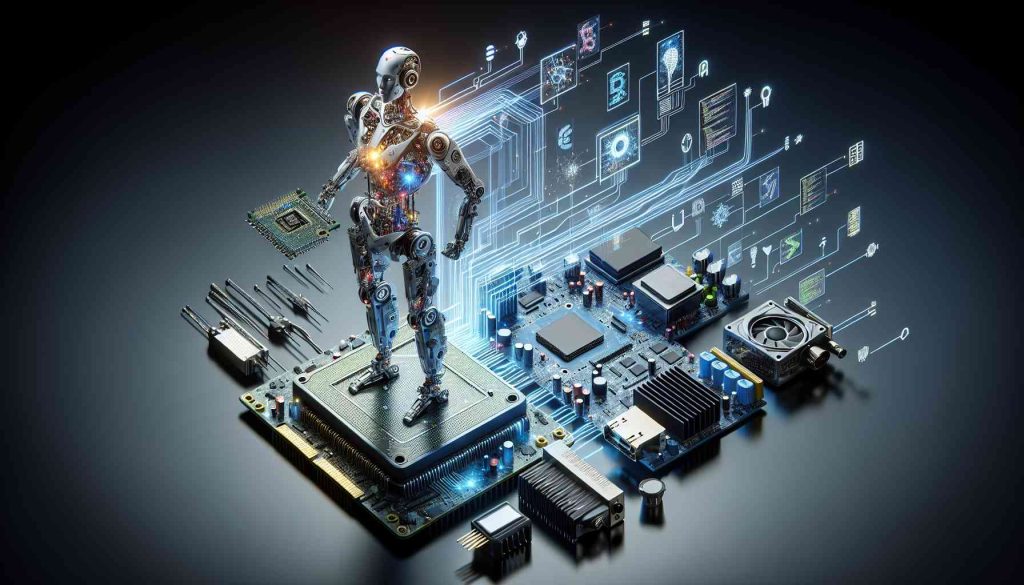
The Convergence of Robotics and Electrical Engineering
In the dynamic landscape of technology, the convergence of robotics and electrical engineering stands out as a beacon of innovation and progress. This symbiotic relationship has transformed countless aspects of modern life, from manufacturing processes to medical procedures. The fusion of robotics in electrical engineering is not just a merger of two fields but a new frontier that redefines what machines can achieve. By delving into various aspects of this convergence, we gain insights into its vast potential and transformative impact on the future.
Historical Development of Robotics and Electrical Engineering
The intertwining paths of robotics and electrical engineering can be traced back to the early 20th century. Initially, robots were primarily mechanical contraptions, limited in function and scope. Meanwhile, electrical engineering rapidly evolved, focusing on harnessing electricity for various applications. The real turning point came with the advent of the computer age, where the development of microprocessors and digital technology allowed for integrating sophisticated electrical systems into robotic designs. This integration marked a new era, where robots evolved from simple mechanical devices to complex entities capable of performing intricate tasks with high precision.
Core Technologies in Robotics and Electrical Engineering
The heart of modern robotics lies in several key technologies:
- Microcontrollers: These compact integrated circuits act as robots’ brains, processing inputs from sensors and making decisions to control actuators.
- Sensors: From simple light detectors to complex LIDAR systems, robots can perceive their environment, gather data, and respond accordingly.
- Actuators: These components convert electrical energy into physical movement, enabling robots to perform tasks ranging from the delicate movements of surgical robots to the heavy lifting of industrial machinery.
- Power Systems: Efficient and reliable power sources are crucial for robot functionality, with advancements in battery technology and energy management systems being key contributors.
- Communication Systems: Wireless technologies and IoT (Internet of Things) integration have enhanced the connectivity of robots, allowing them to work in coordinated networks and respond to remote commands.
Impact on Industry and Manufacturing

The most profound impact of robotics and electrical engineering convergence is seen in the manufacturing sector. Automated assembly lines, powered by robotic arms with precision control systems, have drastically increased production rates while reducing errors. These robots can work around the clock, in environments hazardous to humans, and perform tasks with a level of consistency unattainable by manual labour. Advanced robots equipped with vision systems and adaptive algorithms can now handle tasks like quality inspection, packaging, and even complex assembly operations that were once the sole domain of skilled human workers.
Robotics in Healthcare and Medicine
In healthcare, robotics has introduced groundbreaking changes, especially in surgical procedures. Robots like the da Vinci Surgical System combine advanced electrical engineering with robotic precision to assist surgeons in performing minimally invasive surgeries. These systems offer enhanced agility, stability, and high-definition 3D vision, translating the surgeon’s hand movements into precise actions of miniaturised instruments inside the patient’s body. Additionally, rehabilitation robots and prosthetic limbs with advanced sensory feedback systems are transforming patient care, offering new levels of mobility and independence to individuals with disabilities.
Educational Implications and Future Workforce
The blend of robotics and electrical engineering has necessitated a shift in educational paradigms. Institutions are now integrating interdisciplinary courses that combine principles of both fields, equipping students with the skills needed in this new era. Robotics clubs, maker spaces, and hands-on projects are becoming part of the educational landscape, providing students with practical experiences in designing, building, and programming robotic systems. This educational evolution prepares a new generation of engineers adept at navigating the complexities of a world where robotics and electrical engineering are inextricably linked.
Ethical Considerations and Societal Impact
As robotics becomes increasingly integrated into daily life, it brings various ethical and societal challenges. The displacement of jobs by automated systems is a growing concern, requiring strategies for workforce retraining and adaptation. Privacy issues arise with deploying surveillance and autonomous robots, calling for robust data protection measures. Additionally, using robots in military and law enforcement applications raises questions about accountability and ethical decision-making in scenarios where human lives are at stake. Addressing these challenges requires a balanced approach, where technological advancement is coupled with responsible stewardship and ethical governance.
Conclusion
The convergence of robotics and electrical engineering marks a significant milestone in technological advancement. The integration of these fields has not only enhanced the capabilities of robots but also opened new horizons for innovation and exploration. From revolutionising industrial manufacturing to transforming medical procedures, the impact of robotics in electrical engineering is profound and far-reaching. As this convergence continues to evolve, it promises to bring even more groundbreaking developments, shaping a future where the potential of robotics is limited only by the bounds of human imagination. This exciting journey of discovery and innovation underscores the importance of embracing change and harnessing technology for the betterment of society.
With a solid foundation in technology, backed by a BIT degree, Lucas Noah has carved a niche for himself in the world of content creation and digital storytelling. Currently lending his expertise to Creative Outrank LLC and Oceana Express LLC, Lucas has become a... Read more